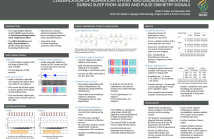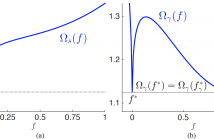- Read more about CLASSIFICATION OF BISYLLABIC LEXICAL STRESS PATTERNS IN DISORDERED SPEECH USING DEEP LEARNING
- Log in to post comments
- Categories:
 4 Views
4 Views- Read more about AN ALTERNATIVE APPROACH FOR AUDITORY ATTENTION TRACKING USING SINGLE-TRIAL EEG
- Log in to post comments
Auditory selective attention plays a central role in the human capacity to reliably process complex sounds in multi-source environments. Stimulus reconstruction has been widely used for the investigation of selective auditory attention using multichannel electroencephalography (EEG). In particular, the influence of attention on sound representations in the brain has been modeled by linear time-variant filters and have been used to track the attentional state of individuals in multi-source environments.
- Categories:
 28 Views
28 Views
- Read more about Classification Of Respiratory Effort And Disordered Breathing During Sleep From Audio and Pulse Oximetry Signals
- Log in to post comments
Sleep-disordered breathing (SDB) is a highly prevalent condition associated with many adverse health problems. As the current means of diagnosis (polysomnography) is obtrusive and ill-suited for mass screening of the population, we explore a minimal-contact, automatic approach that uses acoustics-based methods in conjunction with pulse oximetry. We present a two-stage method for automatically classifying breathing sounds produced during sleep to track respiratory effort and predicting disordered breathing events using respiratory effort durations and oxygen desaturations.
icassp2016.pdf
- Categories:
 22 Views
22 Views- Read more about A METROPOLIS-WITHIN-GIBBS SAMPLER TO INFER TASK-BASED FUNCTIONAL BRAIN CONNECTIVITY
- Log in to post comments
poster.pdf
- Categories:
 7 Views
7 Views- Read more about MISPT - Heart Rate Monitoring from PPG
- Log in to post comments
We propose a multiple initialization based spectral peak tracking (MISPT) technique for heart rate monitoring from
photoplethysmography (PPG) signal.MISPT is applied on the PPG signal after removing the motion artifact using an adaptive noise cancellation filter. MISPT yields several estimates of the heart rate trajectory from the spectrogram of the denoised PPG signal which are finally combined using a novel measure called
trajectory strength. Multiple initializations help in correcting
- Categories:
 17 Views
17 Views- Read more about A New Approach for Heart Rate Monitoring using Photoplethysmography Signals Contaminated by MotionArtifacts
- Log in to post comments
We considered the problem of accurately estimating the heart rate (HR) using photoplethysmography (PPG) signals that are contaminated by motion artifacts (MA). A novel HR estimation approach based on GRidless spectral Estimation and SVM-based peak Selection, denoted by GRESS, was proposed. It first obtained the sparse spectrum of PPG using a continuous dictionary, then a simple spectral subtraction step was adopted to remove MA, finally an SVM-based method was developed to select the spectral peak corresponding to HR.
- Categories:
 27 Views
27 Views- Read more about QUANTIFICATION OF BALANCE IN SINGLE LIMB STANCE USING KINECT
- Log in to post comments
Poster for the work titled - "QUANTIFICATION OF BALANCE IN SINGLE LIMB STANCE USING KINECT".
- Categories:
 12 Views
12 Views
- Read more about Analysis of p-norm Regularized Subproblem Minimization for Sparse Photon-Limited Image Recovery
- Log in to post comments
Critical to accurate reconstruction of sparse signals from low-dimensional low-photon count observations is the solution of nonlinear optimization problems that promote sparse solutions. In this work, we explore recovering high-resolution sparse signals from low-resolution measurements corrupted by Poisson noise using a gradient-based optimization approach with non-convex regularization. In particular, we analyze zero-finding methods for solving the p-norm regularized minimization subproblems arising from a sequential quadratic approach.
ICASSP2016.pdf
- Categories:
 13 Views
13 Views